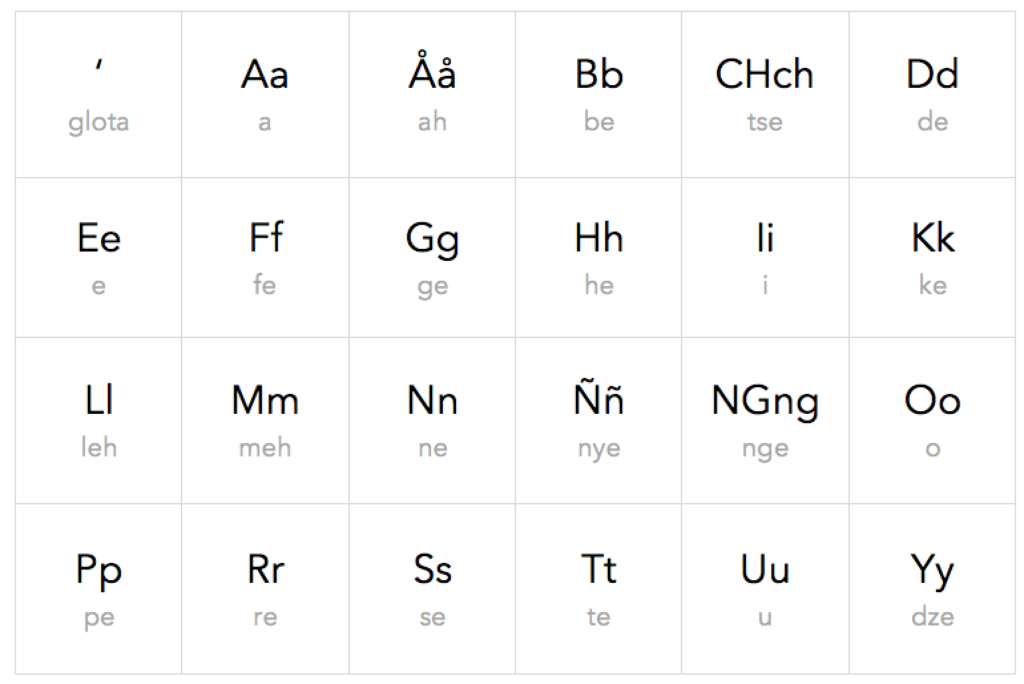guaha and taya’
Essential Chamorro Expression
Guaha is used to indicate existence or possession. Tåya’ indicates non-existence or non-possession.
guaha – there is / there are
Examples :
Guaha klas Chamoru gi Lunes yan Mietkoles.
There’s Chamorro class on Mondays and Wednesdays.
Tåya’ klas gi Lunes sa’ Labor Day.
There is no class on Monday, because it is Labor Day.
Tåya’ taotao gi gima’ Yu’us.
There are no people in church.
2. Guaha + number + (na) + indefinite noun
Guaha siette dias gi semåna.
There are seven days in a week.
Guaha dosse meses gi un año.
There are twelve months in a year.
Guaha tres na estudiånte.
There are three students.
Expressing “to have” something
If we want to say we “have” something, we follow this pattern:
Guaha OBJECT-(possessive pronoun). The possessive pronoun used is how you inform who your subject is. Look at the following examples.
Guaha karetå-hu.
I have a car.
Guaha che’lu-ña palao’an.
He has a sister.
Guaha gima’-måmi.
We have a house.
Tåya’ salåppe’-ña.
She has no money.
Tåya’ gimen-ta.
We have no drinks.
Kåo tåya’ maleffå-mu?
Did you forget anything? (lit. “Was there nothing you forgot?”)
Everyday Expressions: Tåya’ guaha! Literally meaning “nothing is there”, that is, there is no problem or issue, or something is of little consequence, and is the equivalent of the English expression “it’s no big deal!”
Examples of tåya’ guaha as a response:
MARIA: Are you sure I can borrow your book?
LOLA: Ai, tåya’ guaha! Oh, no big deal!
Or, asking for assurance:
MARIA: Tåya’ guaha, if I use your computer?
No big deal if I use your computer?
LOLA: Guse’ ha’. (or Tåya’ guaha!)
Just go right ahead.
It is often used with the linking particle na and can take on different meanings depending on what follows.
To indicate some and not all
Guaha can be used as a determiner to describe that something is true about some of a noun.
Guaha na + indefinite pronoun
For example:
Guaha na biahe
Sometimes (literally, “there are times”)
Guaha na taotao ti yan–ñiha matågo’.
Some people do not like to be told what to do(Lit., There are people (who) do not like to be told what to do.)
Guaha na flores manggof paopao.
Some flowers are very fragrant.
Guaha ha’ na sapåtos mangguaguan.
Some shoes are expensive.
Tåya’ ti un tungo’.
There is nothing you don’t know.
Some related words:
guinaha – wealth, possessions
mangguaha – to describe a family or group as having wealth


